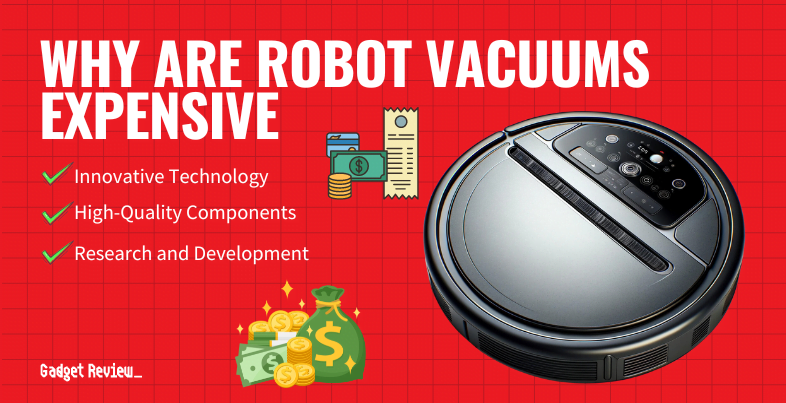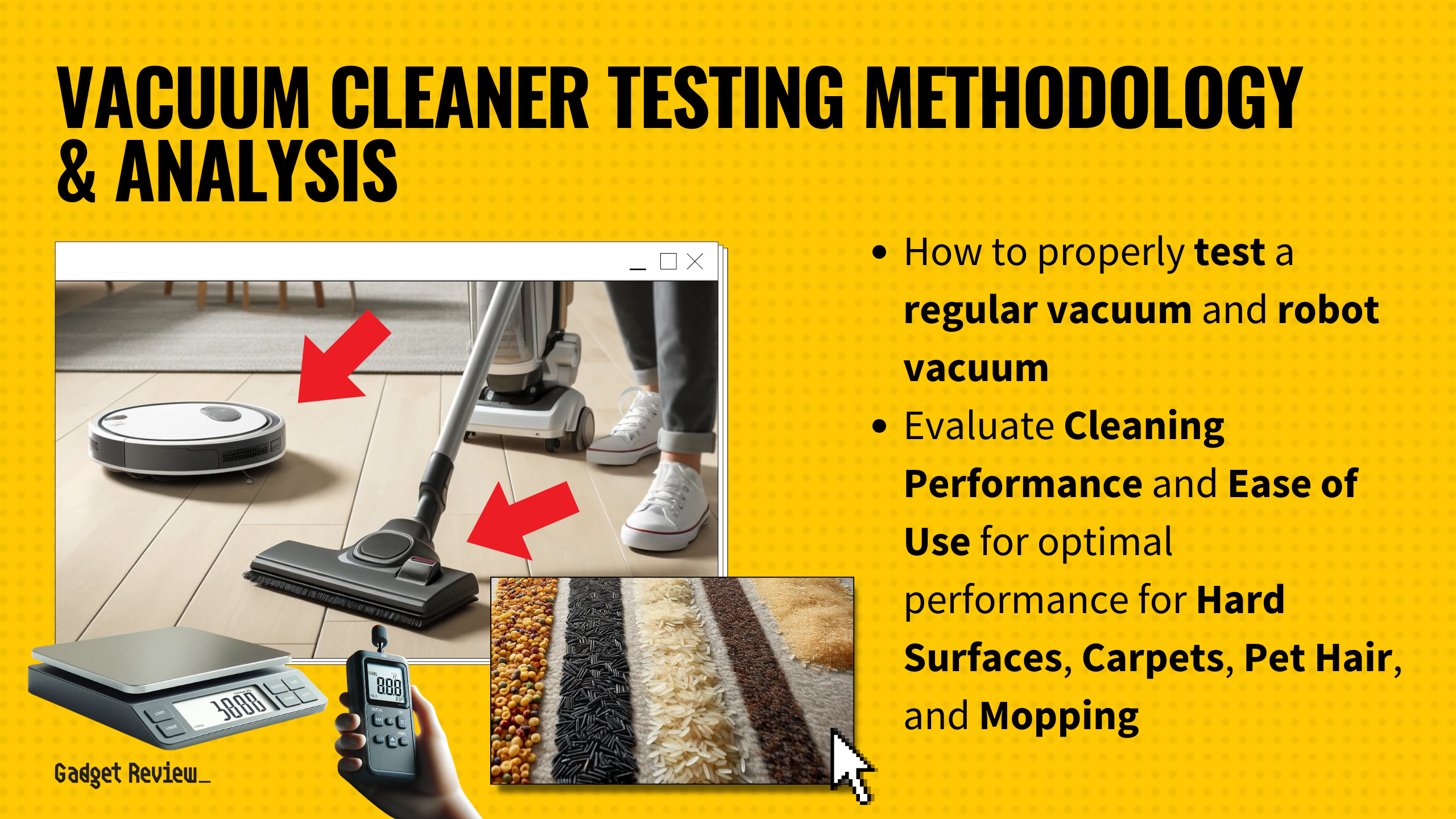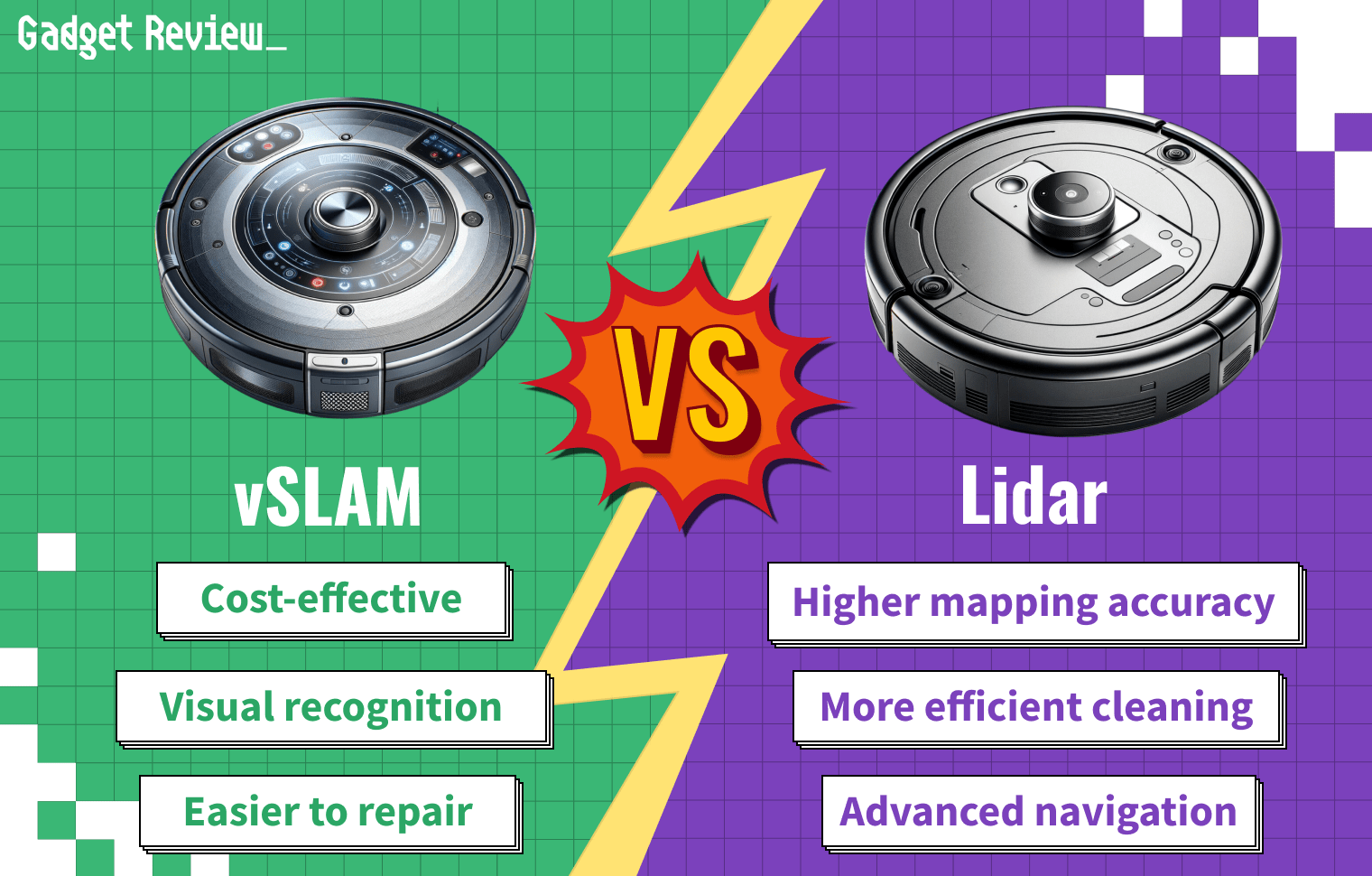Which is better: A regular vacuum or a robot vacuum? The debate between both of these great vacuums is a hot topic.
To cut to the chase, robot vacuums are the way to go if you’re looking for convenience and automated cleaning. However, regular vacuums are best for deeper cleaning and more control.
Ultimately, this choice depends on your specific cleaning needs, lifestyle, and budget.

Understanding the Differences
The differences between both vacuums affect or benefit you depending on your lifestyle. But, the robot vacuum takes the cake for automated cleaning without the human element.
Check out the video below for a visual look at the differences between these two devices.
Deeper Comparisons of Robot Vacuums vs Upright Vacuums

Convenience
- Robot vacuums win the convenience department. They can be programmed to clean your home automatically, making them ideal for those with a busy lifestyle.
- Regular vacuums require manual effort but offer more control and thoroughness in cleaning.
STAT: The global robotic vacuum cleaner market was valued at USD 4.48 billion in 2021 and is expected to reach USD 50.65 billion by 2028.
Suction Power and Cleaning Efficiency
- Regular vacuums typically have stronger suction power, making them more effective for deep cleaning and heavy debris.
- Robot vacuums, while convenient, are better suited for lighter, surface-level cleaning.
Design and Accessibility
- Robot vacuums are compact and easily reach under furniture, a feat that regular vacuums struggle with due to their bulkier design.
- However, regular vacuums offer versatility to clean various surfaces, including upholstery.
STAT: In 2018, global robotic vacuum shipments amounted to 7.68 million.
Price Considerations
- Fortunately, regular vacuums are more affordable. Options start as low as $50.
- Robot vacuums are pricier, with prices ranging from $150 to $500.
insider tip
Robot vacuums are also popular among pet owners, as they can help to clean up pet hair and fur.
Dust Bin Capacity
- The smaller dust bins in robot vacuums mean they require more frequent emptying, especially in homes with more dirt.
- Regular vacuums come with larger bins, suitable for homes with higher cleaning demands.
Filtration Systems
- For those concerned about air quality, especially allergy sufferers, regular vacuums often have superior filtration systems.
- Some high-end robot vacuums do offer HEPA filters, but it’s less common.
insider tip
While robot vacuums have traditionally been expensive, prices have been coming down in recent years, making them more affordable for a wider range of consumers.
Warranty and Durability
- Most robot vacuums come with at least a 1-year warranty. Robot vacuums do best with a protection plan, as you’ll find with Upsie.
- It’s crucial to check the warranty and durability of regular vacuums, as this varies by manufacturer.
Special Features

- Robot vacuums offer smart features and can integrate with home automation systems for ease of use.
- Regular vacuums lack smart technology, but they come with various attachments for different cleaning needs, including wet/dry cleaning options.
insider tip
The average battery life of a robot vacuum is 60-120 minutes.
Making an Informed Decision
When deciding between a robot vacuum and a regular vacuum, consider your specific cleaning needs, lifestyle, and budget.
A robot vacuum could be a great addition if you’re looking for the convenience of automated cleaning and have a relatively clean home with hard floors or low-pile carpets.
However, a regular vacuum’s power and versatility might be more suitable for homes with plush carpets, pets, or higher cleaning demands.
Balancing Technology and Tradition
Robot and regular vacuums have their place in a modern home. Yet, robot vacuums have a clear advantage to perform on their own (once programmed) offering you convenience. This is a must for busy people.
However, your choice should align with your cleaning habits, home type, and how much time you’re willing to dedicate to cleaning.
























